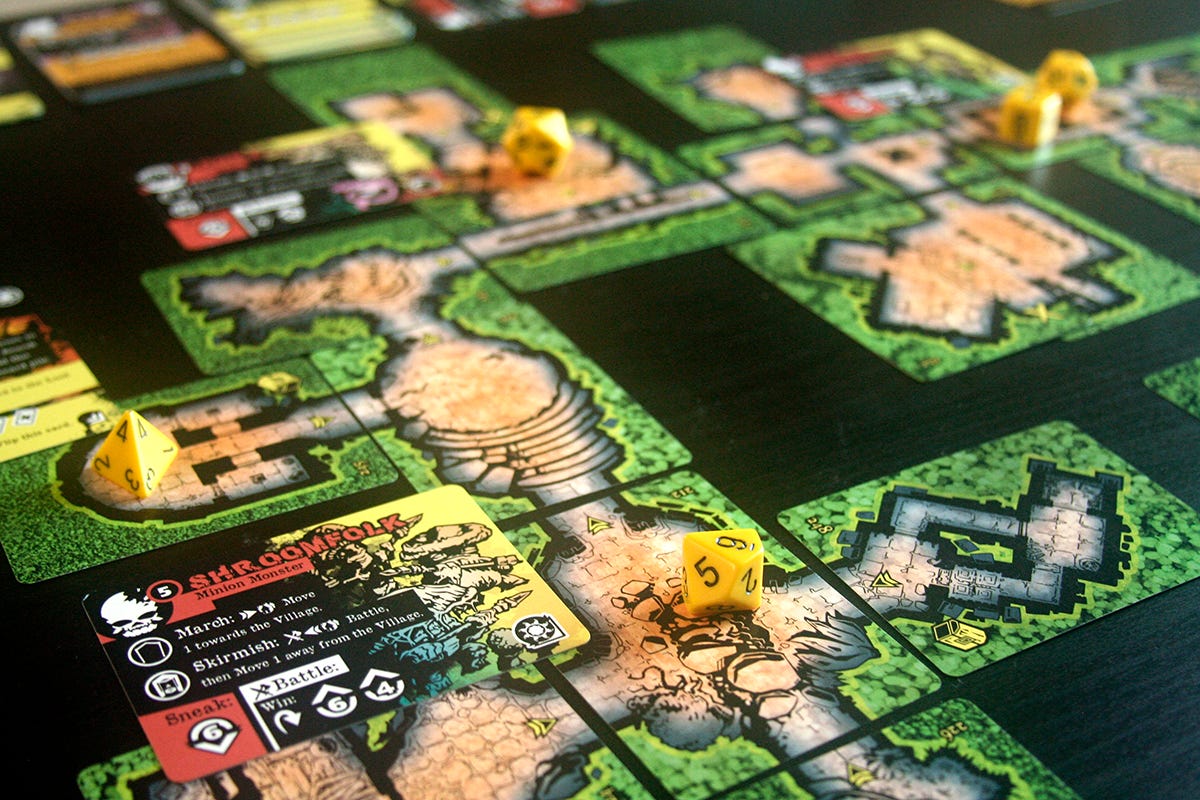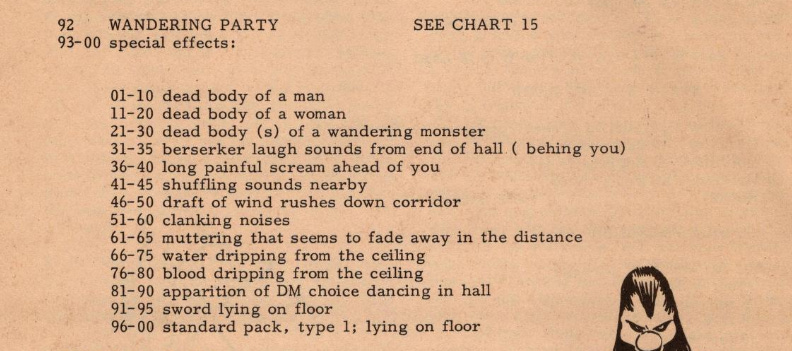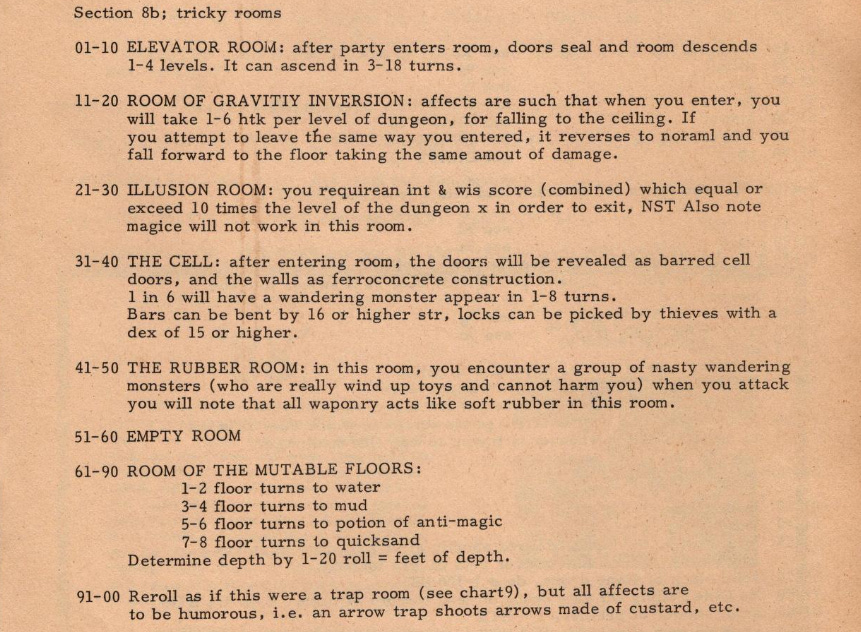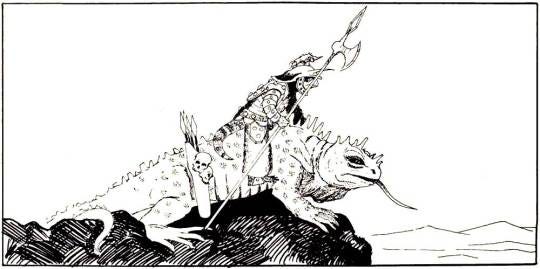SMOOSH JUICE
🗝️ The Dungeon Delving Special Edition
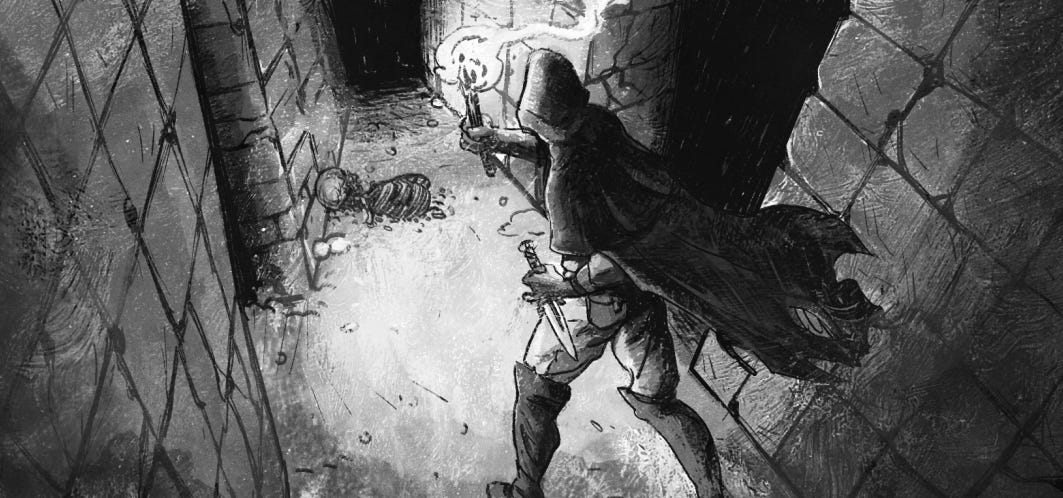
This issue: We decend! 14 solo dungeon games. A lost solo system from 1980. Creator self-interviews via the Inquiracle Oracle. New dungeon tools from Substack writers. And a quick SOLO BORG update.
Ker Nethalas | big-book RPG
You were executed. You woke up anyway. Now you navigate an endless necropolis.
What to expect:
-
Grim tone and high tension — survival isn’t guaranteed
-
Meaningful character creation
-
Detailed random dungeon generation
-
Unique bestiary — each creature has its own action table
It’s a dense game at first, but once the systems click, it runs fast. For solo players looking for grit, challenge, and atmosphere, Ker Nethalas delivers.
You are the Dungeon | journaling game
-
Play as a sentient dungeon. Each turn alternates between Foray (adventurers enter) and Fallow (you grow stronger). Story prompts are driven by tarot card draws.
Beneath The Dungeon Floor! | rules-light RPG
-
A complete party-based RPG in 6 pages. Dense with everything you need to solo a classic crawl in an hour — classes, rules, setting, monsters, and dungeon generation. Written and illustrated by Hodag RPG.
Cryptkeeper | dungeon-building RPG
-
You are the frazzled manager of a broken crypt. You play with 26 playing cards which can each be used as a map tile or saved as an item, but whatever you discard becomes part of the map on the next floor. Fast and funny with a rogue-like feel.
Dark Fort | rules-light RPG
-
The solo dungeon crawl that inspired MÖRK BORG. A streamlined system for generating random dungeons, combat, and loot in just a couple pages. Available as part of the MÖRK BORG Cult: Feretory supplement.
DIE in a Dungeon | board game / RPG hybrid
-
Your polyhedral dice are adventurers. Send them into a card-drawn dungeon, make tactical decisions, and stop the invading monsters. No rolling in combat—DIE is all about smart strategy and planning.
Marching Order: Curse and Coin Edition | board game / RPG hybrid
-
Command a party of scoundrels in branching narrative adventures with tactical combat. This jam-packed new edition adds “Endless Sewer Mode” with procedurally generated dungeons, 40+ new enemies, and the delightfully chaotic “Bullshit Dice” mechanic.
Solitary Depths | supplement
-
A dungeon toolkit built for Solitary Defilement, itself a solo supplement for MÖRK BORG. I love supplements that are toyboxes of tools and that’s what community favorite
delivers.
In Ruins | dungeon-building RPG
-
Build a castle, let it crumble over centuries, and then fight for control. I recently backed this on Kickstarter because I love the concept, and
writes one of my favorite TTRPG Substacks. In Ruins is open for late pledges.
How to Host a Dungeon 2nd Ed | dungeon-building RPG
-
Create a dungeon, following its history through primordial chaos, ancient civilizations, monster infestations, and the rise of a final villain. Whimsical and fun art and writing give it an OSR vibe. Some rules could be clearer, but this is still a recommended dungeon-builder.
Grotten: 1-Bit Deeper | dungeon-building RPG
-
A minimalist, tile-based dungeon crawler. Roll on random tables to fill rooms with monsters, traps, loot, NPCs and a final boss. Includes one-page rules, character creation, cut-out dungeon tiles and tokens, and lots of tables.
Bag of Holding | rules-light RPG
-
Free one-page procedural dungeon crawling RPG. Draw random polyhedral dice from a bag to create your character, the adventure theme, dungeon location, and more. Bag of Holding squeezes a lot of adventure into a single sheet.
2D6 Dungeon | rules-heavy RPG
-
Classic dungeon crawler. Explore randomly generated rooms, battle creatures, gain loot and XP while expanding your map on grid paper. High replayability, low prep, and once you grasp the core mechanic, it’s fast.
Ironsworn Delve | supplement
-
Ironsworn’s exploration expansion. Provides options, tips, and setting details for quest-driven expeditions within perilous sites. Hordes of foes, encounters, loot and quest starters. Ironsworn is available as a free download.
Before Ker Nethalas, Dark Fort, or How to Host a Dungeon, there was The Solo Matrix — a one-person attempt to automate the dungeon crawl. It’s one of the first third-party solo dungeon generators (the first I have found).
📜 In 1980, The Dungeoneer #17 printed an 11-page system for generating dungeons without a GM. The Solo Matrix by E. Al Hattlestad, Jr. included random generation tables you find today — for rooms, traps, encounters, and more.
The Solo Matrix was published incomplete — missing nearly half of its tables with no corrections came in later issues. It’s basically unplayable.
🧱 It’s a bit of a mess: badly organized, full of typos, and fixated on details like wall quality and light fixture placement.
😍 And yet, it’s wonderful!
This is peak old-school — equal parts grotesque, goofy, and whimsical. One table feels like a haunted house ride (blood from the ceiling, muttering in the dark, a sword on the floor).
Another table might send you to The Rubber Room, where all the monsters are wind-up toys.
It’s clunky and inconsistent, but it absolutely captures the chaotic charm of early RPG zines.
I’m tempted to finish writing the tables — The Solo Matrix Reloaded, anyone? Let me know in the comments!
The Inquiracle is The Soloist’s self-interview microgame for game creators. The creator rolls a 20-sided die twice to determine a “theme” and a “subject” to make a question that they answer.
Theme: (2) Challenging | Subject: (20) Media
Q: What’s the most challenging thing about working in this medium?
In order to bring even a tiny game from concept to completed form, you need to either give up some control of how the game turns out (by relying upon specialists in other disciplines and allowing them to put their own stamp on the work) or learn every single discipline required (including the ones you have no desire to do). Having tried both methods, I’m a much bigger fan of working collaboratively; it’s way more fun to place trust in someone you know is absolutely going to stick the landing on their end and thereby be free to pour all your effort into your specialty! (Unfortunately, this means either never making my own ideas or rising to a new challenge: convincing others that my ideas are worth making.)
Theme: (14) Commercial | Subject: (20) Media
Q: How do you feel about the commercialization of media?
I’m probably the wrong guy to ask about this because I grew up a pop culture obsessive; desperate to fit in and be noticed for being “up to date” and always, still, being years behind, somehow. I’m in the bracket of the Eldest of the Millennials, watching monoculture’s last stumbling breaths at the end of the analog age, giving us the digital hellworld we currently enjoy. Then again, the platform democratization of publishing has given me everything I have now as a creator—I am of two minds about the subject (in the immortal words of Tommy Lee Jone’s “Two-Face” in Batman Forever), but I can’t help but miss drawing from a smaller pool of influences to give contrast to our (no longer) “counterculture” hobby.
Theme: (8) Nostalgic | Subject: (17) Artwork
Q: How do you create content without paying for artwork?
Our earliest games were with a Holmes Blue Dragon Rulebook from ‘77 that I found at a Yard Sale. It didn’t come with the Box, or Dice (we had to use the chits!), but after realizing it was a Game of some kind and not just a Magazine, I poured over it trying to understand the Rules. The art is pretty sparse in this presentation, so my imagination had to fill in a lot of gaps. I still remember marveling over the illustration on Page 3 of some kind of Lizard Person astride a Giant Reptilian Mount: I scoured the book looking for Rules for that creature, only to eventually realize that I could just “make them up!”
Theme: (14) Commercial | Subject: (17) Artwork
Q: How do you create content without paying for artwork?
I’d love to think one day I’ll have the budget to pay for commissioned art—but right now that’s not a reality. I made an early decision not to use A.I. art—mostly because I want my work to feel authentic. I’m lucky that I have access to some photo editing software that allows me to create some pieces for articles, particularly by manipulating public domain art—the Met Museum is a favourite. I’ve also relied on the generosity of strangers. Matthew S. Armstrong allowed me to use his fantastic Super Mario art for my Mushroom Knight subclass. I also had great fun using pieces by The Basic Expert from his Creative Commons project for the Dungeon Shuffle.
Theme: (8) Nostalgic | Subject: (2) Character
Q: Have you ever let nostalgia drive your character writing or design?
I don’t know if it goes far enough back to be nostalgia, but in the first thing I ever published (a fantasy novel) I had a character named Beulah, a witch with a habit of turning people into chickens. Now that I am mostly writing adventures, whenever I have a place that could use a witch, Beulah comes back. In my own mind, it’s the same Beulah, who has now appeared in almost a dozen works, connecting all of these worlds back to where I started.
Some recent dungeony resources from Substack TTRPG writers.
- at The Grinning Rat has published an original dungeon generator, “The Teromino Dungeon”, inspired by Tetris’ blocky shapes. He’s even provided a free worksheet to help you make your own.
- has a bunch of excellent dungeon-related articles. “How to generate a dungeon map” breaks down several methods, with pros, cons, and examples for each. In “What makes a dungeon crawl good?”, the author highlights shared elements across board games, TTRPGs, and video games—concluding that “almost every game is made better by adding a sense of discovery, making choices matter, and creating a game arc.”
-
“Dungeon Shuffle” is a free tool by
designed to make dungeon creation fast, creative, and fun. Instead of doing the work for you, it sparks ideas and pushes you to build unique adventures in under 30 minutes. To celebrate, the creator is hosting a Dungeon Shuffle Jam through April.
-
The Lone Adventurer has a bunch of videos focusing on solo dungeon games. This video reviews a bunch of smaller-form delving games I didn’t cover.
-
I’ve praised
’ Delve for its brilliant blend of world-building, map drawing, RPG, and combat simulation—but one of its greatest strengths is the artifact you’re left with: a hand-drawn map of your Dwarven fortress. For a beautifully illustrated example, check out Kruggsmash’s video playthrough.
-
d4 caltrops is a long-running blog of random generation tables. But these aren’t your usual location, loot, or random encounter tables. They’re fun and fresh ideas like “Why Does This Dungeon Remain Un-Plundered” or “What’s at the Bottom of This Pit?” Perfect to help solo delvers add flavor to their adventures. Check out all the Dungeon-tagged tables for delving inspiration.
SOLO BORG, my standalone solo RPG based on and compatible with MӦRK BORG, hit its funding goal in 12 minutes and already has more than 1000 backers with a couple weeks to go in the campaign. Thank you! Soloist readers make up at least 25% of those pledges. I just published a dozen answers in an updated FAQ if you have questions about the project. The Kickstarter campaign for SOLO BORG runs through April 23.
